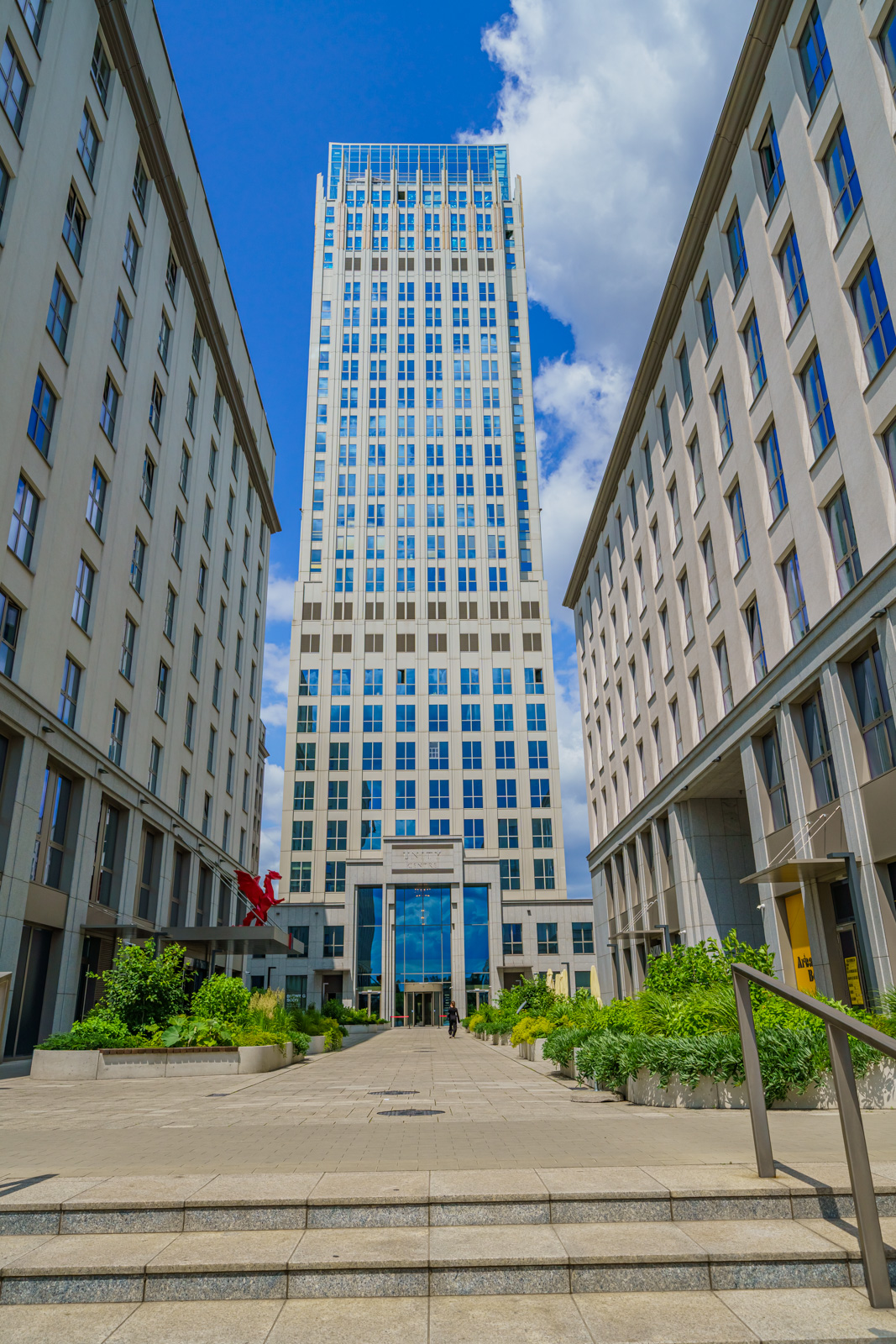Leasing activity on the Warsaw office market continues unabated despite low new supply levels, pushing the vacancy rate down to 10.7 percent. Meanwhile, pre-lets are on the rise, indicating growing occupier interest in office buildings under construction, reveals “At a Glance – Warsaw Office Market” for Q3 2024, the latest quarterly report from BNP Paribas Real Estate Poland.
New supply remains low
In the third quarter of 2024, only 11,000 sqm of new office space came onstream in Warsaw through three projects: Viridis B (7,000 sqm) and Bohema Offices D and E (2,500 sqm and 1,600 sqm respectively). These office completions brought the year-to-date supply to just 75,000 sqm, delivered across eight buildings.
Warsaw’s office stock is expected to expand significantly in the coming quarters. At the end of September, the office development pipeline stood at more than 300,000 sqm in both new and refurbishment projects. The vast majority of this total was under construction in the city centre, particularly in the vicinity of Rondo Daszyńskiego. Only one large office building is scheduled for completion by the end of this year: The Form, which will deliver 28,500 sqm of new office space. If all development projects come to fruition, the Warsaw office market will expand by another 105,000 sqm.
Vacancy rate declines
At the end of the third quarter of 2024, Warsaw’s vacancy rate was 10.7 percent, down by 0.2 pp over the quarter, with office availability amounting to 670,700 sqm. Warsaw’s central office zones recorded a vacancy rate of 8.9 percent, while non-central locations reported 12.2 percent of their office stock as unoccupied.
Looking ahead, office vacancy rates are expected to remain on a downward trajectory over the coming quarters, driven by a slowdown in development activity that will support the absorption of existing office stock. Constrained new office supply in prime locations is likely to encourage developers to relaunch previously shelved projects. This is exemplified by the joint project of Ghelamco and Polish railway operator PKP near Warszawa Gdańska train station.
Occupier activity remains strong
Despite low new supply levels, leasing activity continues unabated. In the third quarter of 2024, gross office take-up reached 176,100 sqm, with 56 percent of this total transacted under new leases. Pre-lets amounted to 38,600 sqm, accounting for 22 percent of all deals in the three months to September 2024.
“Two of the five largest transactions of the third quarter were pre-lets. The strong pre-letting activity in the three months to the end of September 2024 pushed the share of pre-lets in the year-to-date leasing volume up to 9 percent, marking a positive sign for the market. Office demand in Warsaw remained relatively stable in the first nine months of 2024 compared to the same period last year,” says Małgorzata Fibakiewicz, Senior Director, Head of Office Agency, BNP Paribas Real Estate Poland.
Between June and September 2024, the strongest demand for office space in the Polish capital came from professional services, which accounted for a quarter of the total take-up. Financial services followed, with an 18 percent share of the leasing volume. The largest single transaction was Santander Bank’s lease of 24,500 sqm of office space, marking the biggest office deal in Poland since 2022.
A new challenge: rising fit-out costs
Tenants increasingly expect a pragmatic approach to the configuration of leased office space to maximise its functionality. The growing importance of fit-out is attributed to rising costs, increased awareness of ESG requirements and longer lease terms. Property analysis should take account of an existing layout, the acoustic standard of walls and glass panels, and HVAC systems.
“Other key factors to consider include energy consumption, power supply sources and total emissions during both project delivery and ongoing maintenance. Although newly constructed buildings boast higher energy efficiency, their construction generates substantial emissions. Another critical aspect is a thorough review of contractual provisions on ESG and fit-out standards as not all innovations yield direct benefits to tenants,” comments Jan Pawlik, Workplace Management Director, ISS Polska.
Is remote work about to end?
According to the KPMG 2024 CEO Outlook report, which surveyed 1,300 CEOs around the world, more than 80 percent expect to see a full return to the office within three years, marking an increase from 63 percent in 2023. Companies that have already mandated five in-office days include Boeing, Goldman Sachs, Tesla and UPS, while the employees of most large corporations, including Amazon, Apple, Meta and even Zoom, are expected to be in the office a few days a week.
“Many entrepreneurs believe that a return to in-office work will improve the bottom line. Employees, however, are significantly less enthusiastic about the return to the office. Today’s employees expect mainly flexibility in their work environment and want to work on their terms. However, they do not demand a permanent home office as they also recognise the value of working in the office. They expect to be able to choose the workplace that best suits them and enables them to perform better,” adds Dorota Mielke, Associate Director, Office Agency, BNP Paribas Real Estate Poland.







